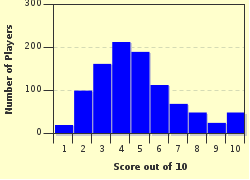Quiz Answer Key and Fun Facts
1. Who succeeded Anthony Eden as British Prime Minister?
2. Which ancient empire had four kings called Nebuchadnezzar?
3. Rome was not always the capital of the Roman Empire. Which two other cities also held that title?
4. How long after his marriage to Catherine of Aragon was annulled by the Archbishop of Canterbury did Henry VIII marry Anne Boleyn?
5. The 2000 film 'Gladiator' was loosely based on the life of which Roman Emperor, played in the movie by Joaquin Phoenix?
6. From which European country did Belgium gain independence in 1830?
7. By what name are the former 'Danish Antillies' now known?
8. When did the Papacy move its seat from the Vatican and relocate in Avignon in southern France for nearly 70 years?
9. The German Empire was founded from numerous kingdoms, duchies and principalities. Four of the founding states were kingdoms -- Bavaria, Prussia and Wurttemberg were three, which was the other one?
10. Who was the first Russian ruler to assume the title of Czar?
Source: Author
EnglishJedi
This quiz was reviewed by FunTrivia editor
bloomsby before going online.
Any errors found in FunTrivia content are routinely corrected through our feedback system.


